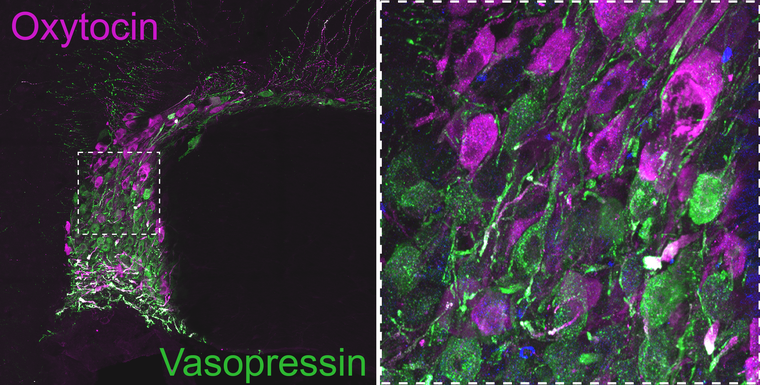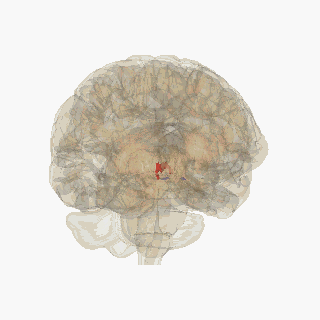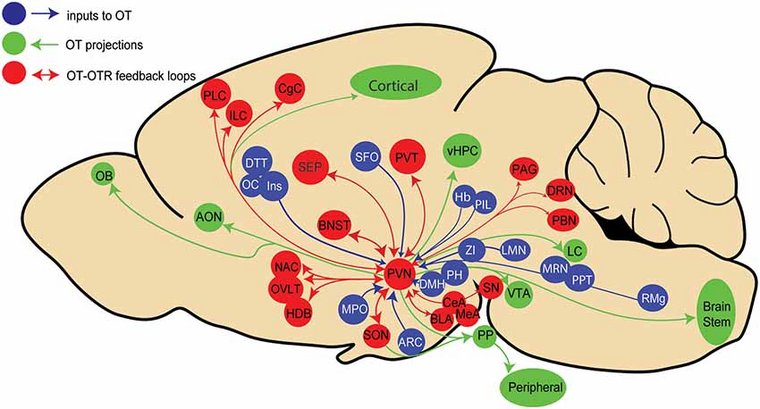Research
Scientific merits: Discoveries
- Novel pathway to modulate brain activity by neuropeptides (a.k.a. non-synaptic axonal release) essential for adaptive behaviors (social behavior, feeding, pain, and fear) altering the 50-year dogma of passive, non-temporally controlled diffusion of peptides through the brain tissue
- Hypothalamic mechanism of processing social touch as a basic evolutionary mechanism to initiate and maintain social communication
- Existence of a memory engram in the hypothalamus, an evolutionarily ancient structure. This upended the dogma that only higher brain regions, such as the hippocampus or cortex, could serve as loci of memory. Further provided evidence that hypothalamic neurons can modulate and reverse fear memories through central and peripheral peptide (oxytocin) release.
- Novel types of hypothalamic neurons that process somatosensory inputs to alleviate pain in the case of nociceptive stimuli, while also promoting social touch-dependent communication in the case of gentle, non-nociceptive stimuli
- Glial cells as novel target for neuropeptides which improve emotional valence to resist threat both independently and in conjunction with neurons.

Scale bars: 100 μm in A,C; 10 µm in B,D.
From: Q. Krabichler and V. Grinevich: The rat nervous system, 5th Ed., Eds. G. Paxinos and S. Kassem
The Oxytocin network
In all mammals, Oxytocin is mainly produced in the paraventricular (PVN) and supraoptic nuclei (SON) of the Hypothalamus, a structure which accounts for less than 1% of the brain's weight, yet is crucial to every individuals survival.

Oxytocin modulates different behaviors related to sociality, sexuality, fear, pain and others. Its effects are mediated via its action throughout the brain as a neuropeptide as well as throughout the periphery as a neurohormone.
Our research makes use of highly specific viral vectors and transgenic rats that allow us to specifically target and manipulate the oxytocin system and its associated behavioral outputs. Our goal is to use these tools to uncover the functional anatomy of the central Oxytocin network, which originates in the Hypothalamus and extends to a wide variety of different brain regions containing the Oxytocin receptor.
Oxytocin and somatosensory processing
Created by Stephanie Schimmer for the Clinical Neuroanatomy Seminars youtube channel. Original contents published in Encyclopedia of the Human Brain (Second Edition)
Zentralinstitut für Seelische Gesundheit (ZI) - https://www.zi-mannheim.de


